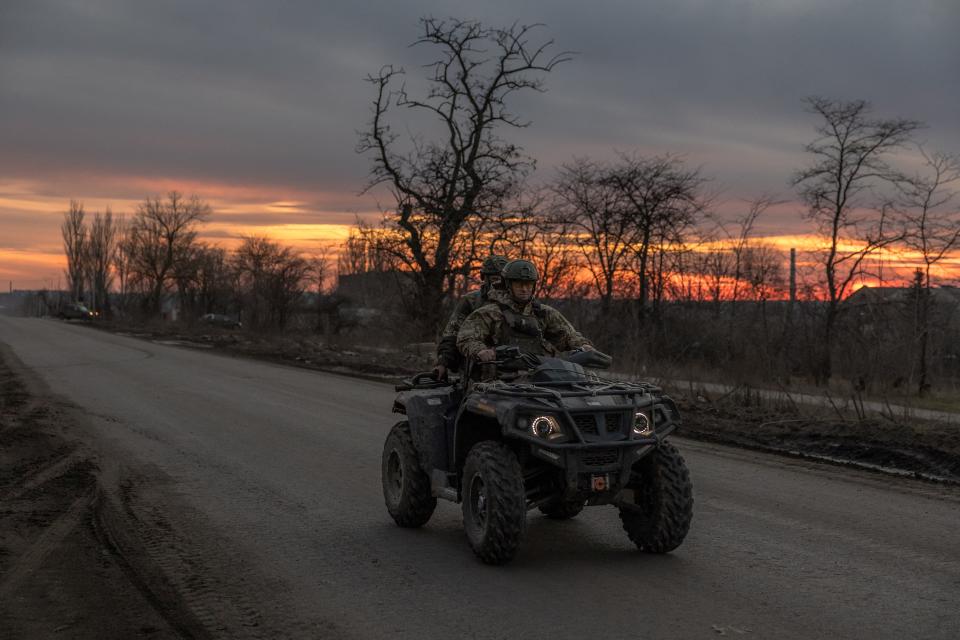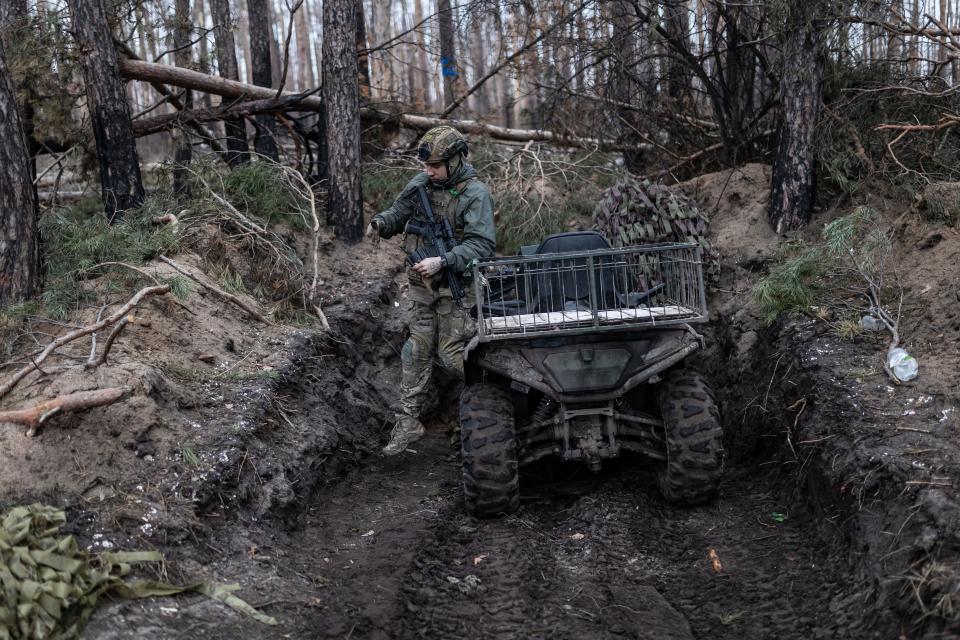Russia's increasingly turning to fast ATVs and motorbikes to find Ukrainian targets, but they're very vulnerable
Russia is relying more on small, fast vehicles — like ATVs and motorbikes — to conduct operations.
Moscow has been using these systems to move troops and stage attacks, Western intelligence says.
But these light vehicles are more vulnerable than armored vehicles to Ukrainian attacks.
Russian forces are increasingly relying on light and fast vehicles like ATVs and motorbikes to move troops to the front lines, conduct reconnaissance of Ukrainian positions, and execute assaults.
By favoring these lighter vehicles, Russia is sacrificing the protection that its troops would enjoy in a more heavily armored ride, leaving them far more vulnerable to Ukrainian attacks, new Western intelligence suggests.
Over the past few months, Russia has "highly likely" increased its employment of light vehicles as a way to move troops to the front lines and stage nighttime attacks on Ukrainian positions, Britain's defense ministry wrote in a Monday intelligence update.
Ukraine's forces were operating quad bikes as early as April 2022, just weeks after Russia launched its full-scale invasion, to ambush Russian forces. Nearly two years later, in February of this year, Ukrainian soldiers said Russian quad bikes were more maneuverable than tracked vehicles and harder to hit with artillery.

"It is likely that Russian forces have increasingly resorted to the use of lighter, faster vehicles to conduct reconnaissance of Ukrainian defensive positions, to allow for subsequent engagement using artillery, first-person view (FPV) or one-way attack OWA drones in an effort to consistently degrade Ukrainian forces," Britain's defense ministry said.
"However, in sacrificing armor and firepower for increased mobility, light vehicles are far more vulnerable than their armored counterparts to an array of weapon systems," the ministry added, noting that "Ukrainian FPV drones have already demonstrated their ability to effectively target such light vehicles."
Russia has reportedly purchased thousands of Chinese Desertcross 1000-3 ATVs, per the intelligence update. Rob Lee, a senior fellow at the Foreign Policy Research Institute, said last month that one of these vehicles in service with Russia's 177th Naval Infantry Regiment had been outfitted with a counter-drone screen.
Chinese Desertcross ATV with an improvised counter-FPV screen in service with Russia’s 177th Naval Infantry Regiment. https://t.co/WX4nTcfqEO pic.twitter.com/wm0zSkTafp
— Rob Lee (@RALee85) April 26, 2024
This improvised anti-drone armor — cage-like netting that's sometimes referred to as a "cope cage" — has been featured prominently on Russian and Ukrainian armored vehicles, including tanks. It is essentially a last-ditch added layer of protection to defend against threats like drones, artillery, and some missiles.
While Russia's lighter vehicles are more vulnerable to Ukrainian attacks than its heavy armor, Moscow has still lost scores of tanks and armored vehicles on the battlefield, including to Kyiv's exploding FPV drones. These systems are by no means invincible, even if they are equipped with added layers of protection.
The shift in transportation also appears to have changed the pace of Russian assaults, one Ukrainian commander said.

Several weeks ago, Russian infantry soldiers were launching attacks every few hours alongside a collection of armored vehicles, Col. Pavlo Fedosenko, the commander of Ukraine's 92nd assault brigade, told the Economist in a recent interview.
But now, Moscow's troops use quad bikes and motorcycles to attack in small groups every few days as they look for weak spots in Kyiv's defensive lines.
Russia hasn't completely turned its back on its armored vehicles, though. Last week, for instance, Moscow launched a new assault in Ukraine's northeastern Kharkiv region and tried using armored vehicles to break through defensive lines. Kyiv said its forces repelled the initial attack, but intense fighting continued through the weekend.
"Defensive battles are ongoing, fierce battles — on a large part of our border area," Ukrainian President Volodymyr Zelenskyy said Sunday, addressing the situation in Kharkiv. He added that "there are villages that have actually turned from a gray zone into a combat zone — and the occupier is trying to gain a foothold in some of them, or simply use some of them for further advancement."
Read the original article on Business Insider

